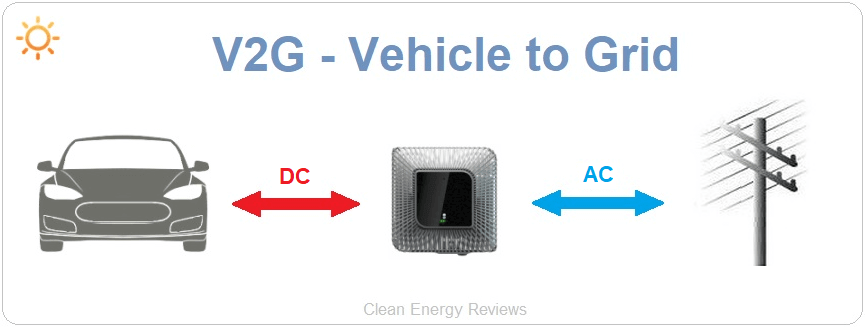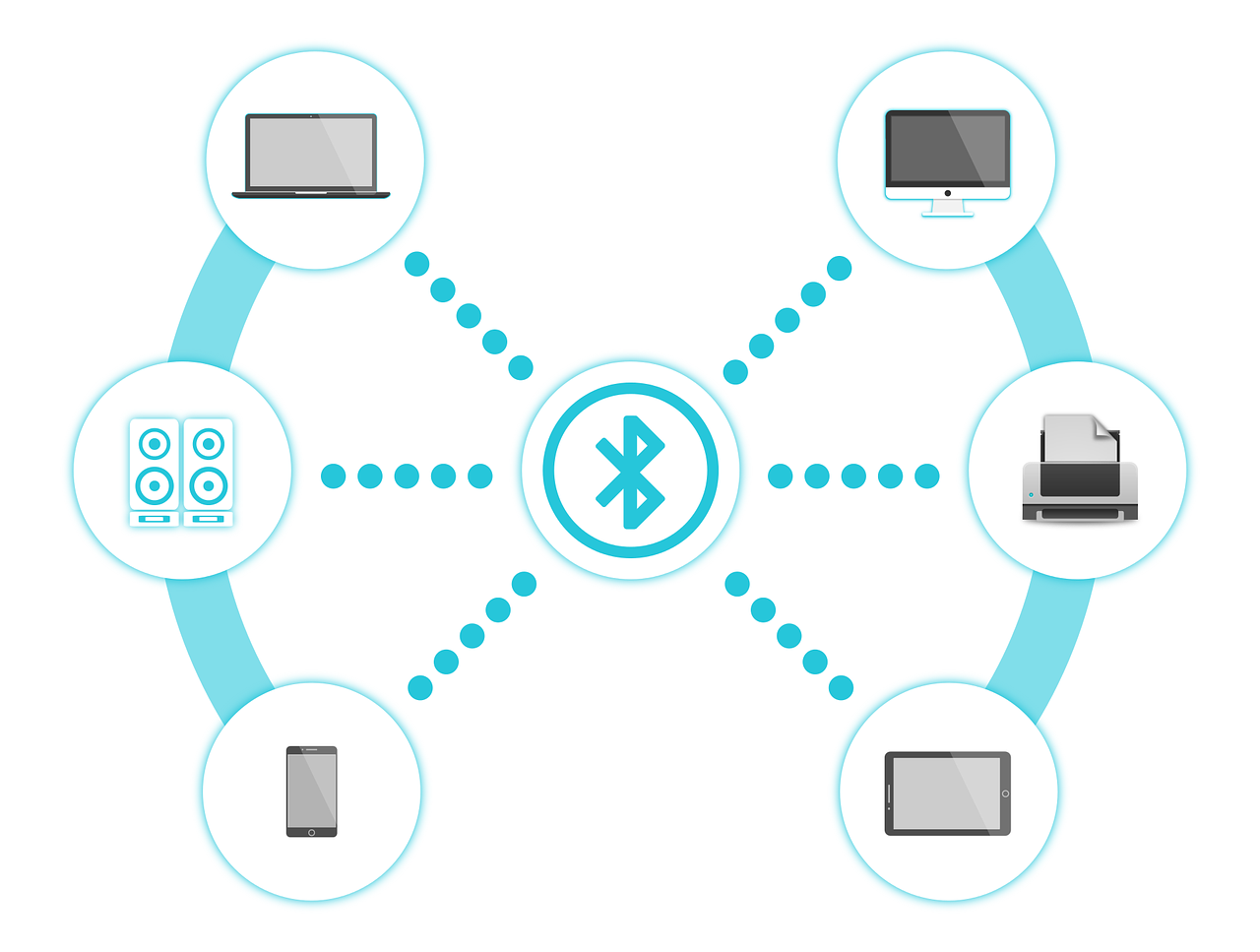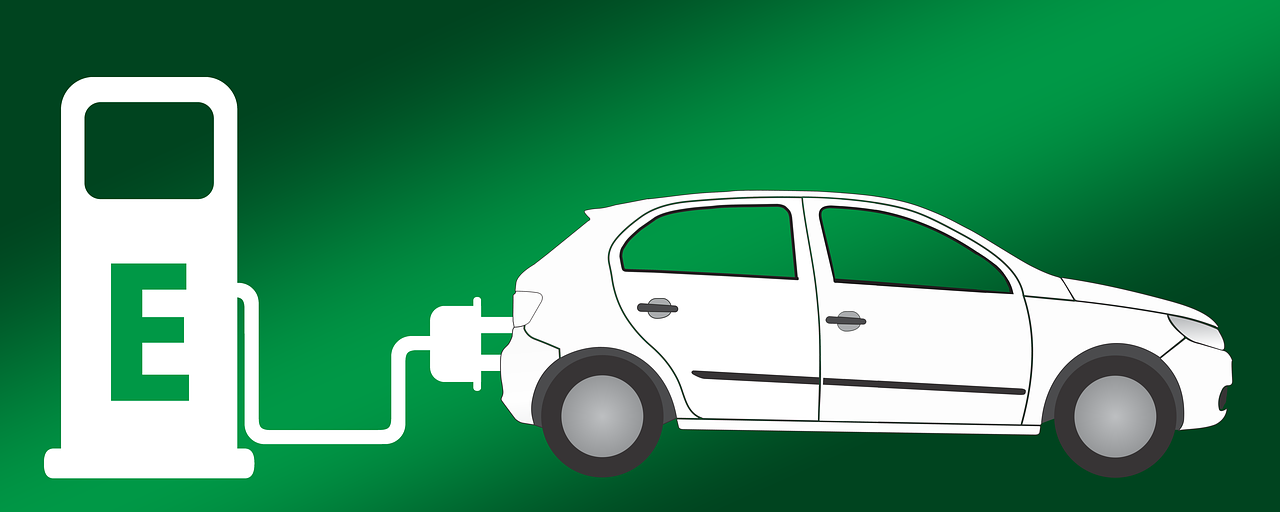Introduction
Electric vehicles (EVs) are transforming the automotive industry, offering a cleaner and more sustainable mode of transportation. As concerns about climate change and air pollution grow, automakers are increasingly investing in electric vehicle technology and innovations. In this article, we will explore the latest advancements in EV technology, highlighting the innovations driving the electric vehicle revolution.
The electric vehicle (EV) revolution is not just a promising shift in the automotive industry; it’s a transformative wave that’s reshaping how we think about transportation and sustainability. Let’s dive deeper into the latest advancements in EV technology and the innovations propelling this revolution:
1. Zero-Emission Mobility: EVs have emerged as champions of sustainability. They produce zero tailpipe emissions, significantly reducing the carbon footprint of transportation. This is a crucial step in mitigating the impacts of climate change and improving air quality in urban areas.
2. Range Improvements: Early concerns about EV range have been steadily addressed. Innovations in battery technology have extended the range of electric vehicles, making them suitable for longer journeys and alleviating “range anxiety.” This progress continues with ongoing research into higher-capacity batteries and faster charging.
3. Fast-Charging Networks: The development of fast-charging networks has been a game-changer. With rapid charging stations becoming more widespread, EV owners can recharge their vehicles quickly, making long-distance travel more convenient. This infrastructure expansion is a testament to the commitment to EV adoption.
4. Battery Technology: Batteries are the heart of EVs, and advancements in battery technology are a driving force behind the revolution. Lithium-ion batteries have become more efficient and affordable, and research into solid-state batteries promises even greater energy density and safety.
5. Affordable Models: Automakers are making EVs more accessible to the masses. Affordable electric models are entering the market, offering consumers a wider range of choices that align with their budgets. This democratization of EVs is accelerating adoption.
6. Performance and Style: EVs are not just environmentally friendly; they’re also fun to drive. Electric motors deliver instant torque, providing exhilarating acceleration. Automakers are capitalizing on this by designing stylish and high-performance electric vehicles that challenge conventional notions of what an EV can be.
7. Autonomous Driving: The synergy between electric vehicles and autonomous driving is a compelling prospect. Electric powertrains offer a quiet and efficient platform for self-driving technologies. We are witnessing the convergence of these two innovations, with the potential to reshape urban mobility.
8. Eco-Friendly Materials: Sustainability goes beyond the power source. Automakers are incorporating eco-friendly materials in EV production, from recycled plastics to sustainable interior elements. These choices reduce the environmental impact of manufacturing.
9. Government Initiatives: Governments worldwide are incentivizing EV adoption through subsidies, tax credits, and emissions regulations. These policies encourage both consumers and manufacturers to embrace electric mobility.
10. Charging Convenience: Innovations in home and workplace charging solutions are making EV ownership more convenient. Home chargers are becoming more affordable and user-friendly, allowing EV owners to recharge their vehicles overnight.
11. Environmental Accountability: Automakers are increasingly focused on the entire lifecycle of EVs, from production to disposal. Sustainable practices are being incorporated into manufacturing processes, and recycling and disposal plans are being developed to minimize environmental impact.
12. Public Perception: A shift in public perception is also driving the electric vehicle revolution. More consumers are recognizing the benefits of EVs, from reduced operating costs to the satisfaction of driving a cleaner, quieter, and technologically advanced vehicle.
In conclusion, the electric vehicle revolution is a multi-faceted transformation that extends beyond the automotive industry. It reflects a global commitment to sustainability, innovation, and a cleaner future. As we continue to explore the latest advancements in EV technology, we are witnessing the evolution of transportation and a path toward a more sustainable and eco-conscious world.
If you’d like to dive deeper into this subject, there’s more to discover on this page: Trends and developments in electric vehicle markets – Global EV …
The heart of any electric vehicle is its battery, and significant strides have been made in battery technology. Innovations include higher energy density batteries, faster-charging capabilities, and improved durability. Solid-state batteries, currently in development, promise even greater energy storage and longer lifespans.
“Solid-state batteries, currently in development, promise even greater energy storage and longer lifespans. These advancements are not only beneficial for electric vehicles but also have the potential to revolutionize energy storage for renewable sources like solar and wind power, enhancing our ability to transition to a greener future.”
Additionally, you can find further information on this topic by visiting this page: 6 EV Battery Technology Inventions Driving the Industry Forward …

Range anxiety has been a barrier to EV adoption. However, recent innovations have led to electric vehicles with extended driving ranges. Tesla’s Model S, for example, offers a range of over 375 miles on a single charge, making long-distance travel more practical for EV owners.
“Moreover, the growing network of fast-charging stations across highways and urban areas has alleviated range anxiety. EV drivers can now find convenient charging options during their journeys, further promoting the adoption of electric vehicles as a viable and eco-friendly mode of transportation.”
Additionally, you can find further information on this topic by visiting this page: Toyota unveils sweeping plans for new battery tech, EV innovation …

Investments in charging infrastructure are essential to support the growth of electric vehicles. Fast-charging stations, often using renewable energy sources, are becoming more widespread. Some EVs can even charge rapidly, providing around 80% battery capacity in less than 30 minutes.
As the adoption of electric vehicles (EVs) continues to rise, investments in charging infrastructure are paramount to ensuring the convenience and accessibility of electric mobility. Fast-charging stations, strategically located along highways and in urban areas, are becoming increasingly prevalent. These stations, often powered by renewable energy sources like solar or wind, offer EV owners the ability to quickly replenish their vehicle’s battery. In fact, the latest advancements in fast-charging technology are so efficient that they can provide approximately 80% of battery capacity in less than 30 minutes.
This rapid charging capability is a game-changer for the EV industry. It means that EV drivers can conveniently charge their vehicles during short stops, such as grabbing a meal or taking a coffee break during a road trip. The speed and accessibility of fast-charging stations make EVs a practical choice for daily commuting and long-distance travel alike.
Moreover, the integration of smart technology into charging infrastructure further enhances the EV ownership experience. With the help of mobile apps and digital platforms, EV users can locate nearby charging stations, check their availability, and even initiate charging remotely. These innovations streamline the charging process, making it more convenient and efficient for EV owners.
In addition to public charging networks, home charging solutions are becoming increasingly prevalent. Homeowners can install Level 2 chargers in their garages, allowing them to charge their EVs overnight, ensuring a full battery every morning. This convenience contributes to the overall appeal of electric vehicles, as it eliminates the need for frequent trips to public charging stations.
Overall, investments in charging infrastructure, coupled with advancements in fast-charging technology and smart solutions, are paving the way for a future where electric vehicles are the norm. As more charging stations appear on the map and charging speeds continue to improve, the transition to sustainable and electric mobility becomes not only feasible but also highly desirable for a cleaner and more environmentally responsible transportation future.
Don’t stop here; you can continue your exploration by following this link for more details: FACT SHEET: Biden Administration Advances Electric Vehicle …

V2G technology allows electric vehicles to discharge energy back into the grid, providing an additional source of income for EV owners and helping balance electricity demand. This innovation can play a crucial role in sustainable energy systems.
Vehicle-to-Grid (V2G) technology is a groundbreaking innovation that promises to reshape the way we think about both transportation and energy management. Beyond the obvious benefits for EV owners, it holds the potential to revolutionize our approach to energy sustainability and grid management. Let’s delve deeper into the significance of V2G technology:
1. Dynamic Energy Exchange: V2G technology turns electric vehicles into dynamic energy assets. Instead of just drawing energy from the grid, EVs become mobile power sources that can discharge surplus electricity back into the grid when needed. This bidirectional energy flow is a game-changer for grid operators.
2. Grid Stability: One of the critical challenges in renewable energy integration is its intermittent nature. Solar and wind power generation depends on weather conditions. V2G-equipped EVs can act as energy buffers, absorbing excess renewable energy during peak production periods and injecting it back into the grid during demand spikes, enhancing grid stability.
3. Demand Response: V2G technology enables what’s known as “demand response.” When the grid is stressed or electricity prices surge, EV owners can opt to sell stored energy back to the grid at advantageous rates, reducing the need for peaker plants and helping balance supply and demand.
4. Income Generation: For EV owners, V2G presents an opportunity to monetize their vehicle’s battery capacity. By participating in grid services, they can earn income or credits for the energy they provide. This can offset the cost of vehicle ownership and make EVs even more financially attractive.
5. Environmental Impact: V2G technology complements the environmental benefits of electric vehicles. By allowing EVs to support renewable energy integration and grid stability, it indirectly contributes to reducing greenhouse gas emissions and dependence on fossil fuels.
6. Grid Resilience: In the face of natural disasters or emergencies, V2G-equipped EVs can serve as distributed energy resources. They can power homes or critical infrastructure, providing resilience to communities when the grid is compromised.
7. Grid Decentralization: V2G contributes to the trend of grid decentralization. Instead of relying solely on centralized power plants, electricity generation becomes distributed across EVs and renewable sources, enhancing the grid’s resilience and adaptability.
8. Future-Proofing: As renewable energy capacity continues to grow, V2G can help future-proof our energy infrastructure. It ensures that the grid can handle the increasing share of renewables by efficiently managing their intermittency.
9. Policy Support: Governments and regulatory bodies are recognizing the potential of V2G technology and are implementing supportive policies and incentives to encourage its adoption. This includes regulatory frameworks that enable grid participation and compensation for EV owners.
10. Technological Advancements: Ongoing advancements in V2G technology are making it more efficient and user-friendly. These innovations include improved bidirectional charging hardware and more sophisticated energy management systems.
In conclusion, V2G technology is a transformative force that aligns the interests of electric vehicle owners, grid operators, and society at large. It represents a convergence of sustainable transportation and smart grid management, offering a win-win solution that can enhance grid reliability, reduce emissions, and create economic opportunities. As V2G technology continues to evolve, it will play an increasingly vital role in achieving a more sustainable and resilient energy future.
For additional details, consider exploring the related content available here Vehicle-to-Grid (V2G): Everything you need to know

Electric vehicles are becoming increasingly connected and intelligent. They can receive over-the-air software updates, improving performance and adding new features. Some EVs offer advanced driver-assistance systems, making them safer and more convenient to drive.
“Electric vehicles are not just about clean energy; they are also at the forefront of automotive innovation. The integration of artificial intelligence and smart technologies allows these vehicles to continuously evolve. From autonomous driving capabilities to real-time monitoring and predictive maintenance, electric cars are leading the way in transforming the driving experience.”
For additional details, consider exploring the related content available here Transportation Systems Management and Operations in Smart …

Automakers are incorporating sustainable materials and production methods into electric vehicle manufacturing. This reduces the carbon footprint of EVs and aligns with environmental goals.
“In addition to their green powertrains, electric vehicles are becoming more eco-friendly in their entire lifecycle. Automakers are prioritizing sustainable materials and environmentally conscious manufacturing processes. This shift not only reduces the carbon footprint of EVs but also aligns with broader environmental goals, making electric vehicles a sustainable choice from production to operation.”
Additionally, you can find further information on this topic by visiting this page: AMMTO FY22 Multi-topic FOA | Department of Energy

Innovations in electric SUVs and trucks are expanding the EV market. Electric SUVs like the Ford Mustang Mach-E and electric trucks like the Rivian R1T are gaining popularity, catering to a broader range of consumer preferences.
In recent years, the electric vehicle (EV) market has witnessed a significant expansion beyond traditional passenger cars. Innovations in electric SUVs and trucks are playing a pivotal role in broadening the appeal of EVs and catering to a diverse range of consumer preferences.
Electric SUVs, once considered a niche segment, are now gaining widespread popularity. Models like the Ford Mustang Mach-E have garnered attention for their impressive performance, spacious interiors, and stylish designs. These EVs offer the versatility and comfort that SUV enthusiasts appreciate while delivering the benefits of zero-emission driving. Families and individuals alike are increasingly turning to electric SUVs as practical and eco-friendly alternatives to their gasoline counterparts.
Meanwhile, the introduction of electric trucks represents a groundbreaking development in the EV industry. Electric trucks like the Rivian R1T are designed to meet the demands of both adventure enthusiasts and commercial users. These trucks offer robust towing capabilities, rugged off-road performance, and ample cargo space, making them attractive options for a wide range of applications, from outdoor recreation to work-related tasks.
One of the key advantages of electric SUVs and trucks is their ability to dispel the myth that electric vehicles are solely for urban commuting. With extended ranges and robust charging infrastructure support, electric SUVs and trucks provide the freedom to explore off the beaten path, take road trips, and tackle challenging terrains. This versatility makes them appealing to those who require a vehicle that can handle diverse driving conditions.
Moreover, the development of electric SUVs and trucks is fostering healthy competition in the EV market, driving innovation and pushing automakers to continuously improve their offerings. As more manufacturers enter this space, consumers are presented with a growing array of choices, encouraging further adoption of EVs across various segments of the automotive market.
In conclusion, the rise of electric SUVs and trucks represents a significant step forward in the electrification of the automotive industry. These vehicles combine the advantages of electric propulsion with the versatility and capabilities that consumers have come to expect from SUVs and trucks. As innovation continues to drive the EV market, we can anticipate even more exciting developments in the world of electric mobility, making sustainable transportation accessible to an ever-expanding audience.
To delve further into this matter, we encourage you to check out the additional resources provided here: GFO-22-615 – Innovative Charging Solutions for Medium- and …

Conclusion
Electric vehicle technology and innovations are reshaping the automotive industry, driving us toward a greener and more sustainable future. As battery technology continues to advance, charging infrastructure expands, and vehicle designs become more efficient and attractive, the transition to electric mobility becomes increasingly appealing. The combined efforts of automakers, governments, and consumers are accelerating the shift towards a cleaner and more environmentally responsible transportation system.
The ongoing transformation of the automotive industry driven by electric vehicle (EV) technology and innovations is nothing short of a revolution. This movement towards a greener and more sustainable future is not only reshaping the way we think about transportation but also reshaping the world itself. Let’s explore further the factors propelling this exciting change:
1. Advancing Battery Technology: The heart of any electric vehicle lies in its battery, and the advancements in battery technology are remarkable. These innovations lead to increased energy density, faster charging times, and extended lifespans. As a result, EVs become more practical, with longer ranges and shorter refueling stops.
2. Expanding Charging Infrastructure: The proliferation of charging infrastructure is turning EV adoption into a practical choice. From fast-charging stations along highways to convenient home chargers, the network is rapidly expanding. This growth alleviates range anxiety and supports the convenience of EV ownership.
3. Vehicle Efficiency: EV designs are evolving, not only to be efficient but also to be highly attractive. Automakers are creating sleek, cutting-edge models that challenge conventional notions of what electric cars can look like. The marriage of sustainability and style is captivating consumers.
4. Lowering Emissions: The shift to electric mobility directly addresses the concerns of climate change and air pollution. EVs produce zero tailpipe emissions, meaning cleaner air and reduced carbon emissions. This transition is instrumental in mitigating the impact of global warming.
5. Government Support: Governments worldwide are recognizing the importance of electric mobility and are offering incentives, tax breaks, and emissions regulations to encourage EV adoption. These policies accelerate the transition and align with environmental goals.
6. Consumer Choice: The growing variety of electric vehicle models ensures that consumers can find an EV that suits their needs and preferences. From compact city cars to spacious SUVs, the choices are expanding, making EVs accessible to a broader demographic.
7. Cost Competitiveness: As economies of scale kick in and battery costs continue to decrease, the upfront price of electric vehicles is becoming more competitive with traditional internal combustion engine cars. This shift in affordability is a key driver of adoption.
8. Global Collaboration: Automakers, governments, and consumers are collaborating on a global scale to accelerate the transition. Partnerships for charging infrastructure, research and development, and shared visions for a cleaner future are common themes.
9. Sustainable Materials: The sustainability ethos extends to the materials used in EV production. From recycled plastics to eco-friendly interiors, automakers are adopting sustainable practices throughout the vehicle’s lifecycle.
10. Technological Innovation: Beyond electrification, EVs are embracing technological innovations like autonomous driving, connected services, and advanced driver-assistance systems. This integration of technology enhances the overall driving experience.
11. Environmental Responsibility: Consumers are increasingly choosing electric vehicles not only for their cost savings but also for their contribution to environmental responsibility. Owning an EV becomes a statement of commitment to a cleaner and more sustainable planet.
In conclusion, the shift toward electric mobility is no longer a vision of the future; it’s a present-day reality. The convergence of advancing technology, expanding infrastructure, attractive designs, and environmental consciousness is driving this transformation. As we continue down this path, the automotive industry is poised to contribute significantly to a greener and more sustainable future for all.
For a comprehensive look at this subject, we invite you to read more on this dedicated page: TVIDC Advisory Panel Overview and Conclusions – Center for …
More links
You can also read more about this here: Electric Car Innovation: How Electric Vehicles Are Changing the …
